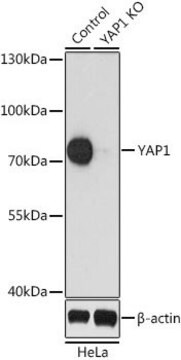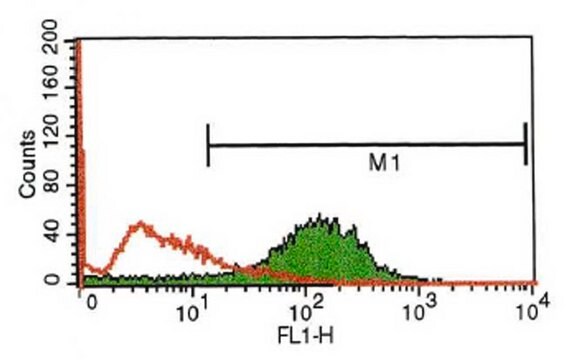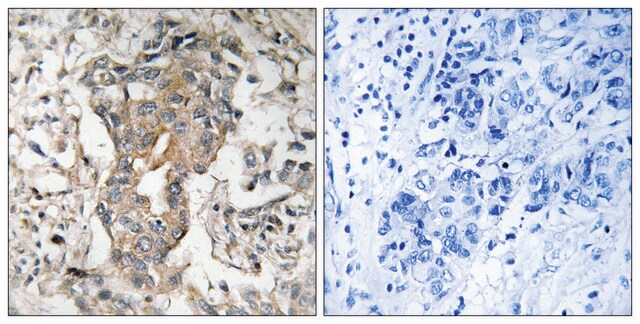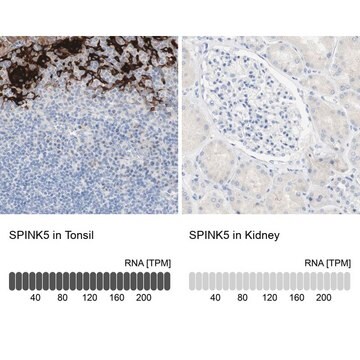E9653
Anti-Endothelial Cells antibody, Mouse monoclonal
clone P1H12, purified from hybridoma cell culture
Synonym(s):
Anti-CD146
About This Item
Recommended Products
biological source
mouse
Quality Level
conjugate
unconjugated
antibody form
purified immunoglobulin
antibody product type
primary antibodies
clone
P1H12, monoclonal
form
buffered aqueous solution
mol wt
antigen 130 kDa
species reactivity
human
technique(s)
flow cytometry: suitable using 2% paraformaldehyde 9:1 methanol
immunocytochemistry: suitable using 4% paraformaldehyde 0.1-0.5% triton X-100, smears or live cells
immunohistochemistry: suitable using using acetone-fixed sections of human tongue
immunoprecipitation (IP): suitable
indirect ELISA: suitable
microarray: suitable
isotype
IgG1
shipped in
dry ice
storage temp.
−20°C
target post-translational modification
unmodified
General description
Specificity
Immunogen
Application
- immunocytochemistry
- immunohistochemistry
- flow cytometry
- immunoprecipitation
- enzyme-linked immunosorbent assay (ELISA)
- western blotting
Biochem/physiol Actions
Physical form
Disclaimer
Not finding the right product?
Try our Product Selector Tool.
Storage Class Code
12 - Non Combustible Liquids
WGK
nwg
Flash Point(F)
Not applicable
Flash Point(C)
Not applicable
Choose from one of the most recent versions:
Certificates of Analysis (COA)
Don't see the Right Version?
If you require a particular version, you can look up a specific certificate by the Lot or Batch number.
Already Own This Product?
Find documentation for the products that you have recently purchased in the Document Library.
Our team of scientists has experience in all areas of research including Life Science, Material Science, Chemical Synthesis, Chromatography, Analytical and many others.
Contact Technical Service








